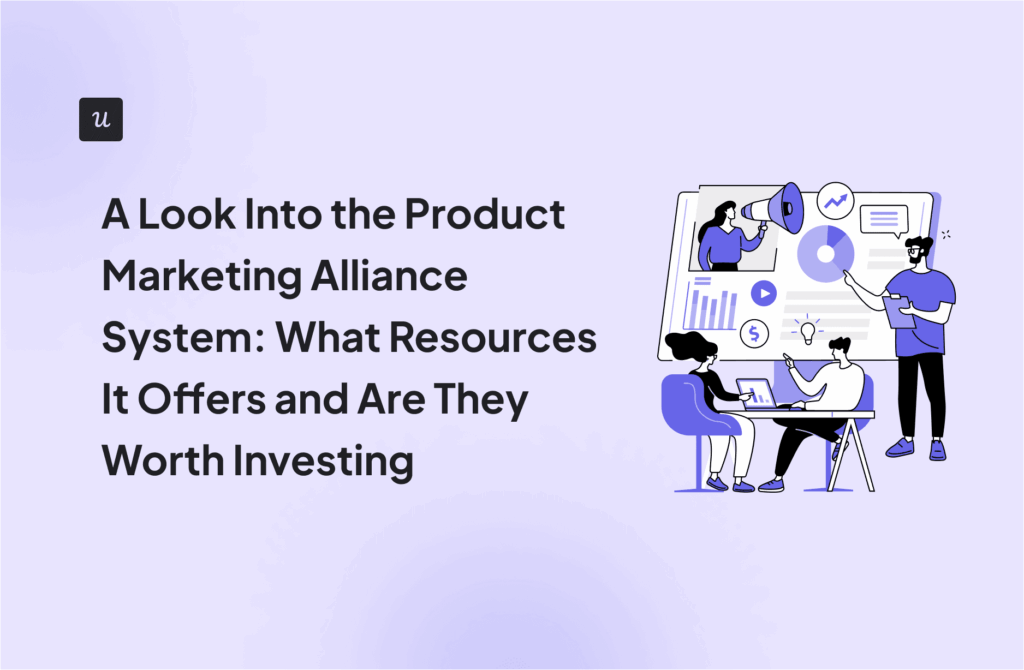
The Product Marketing vs Growth Marketing discussion isn’t just about specific tasks and to-do lists, but about how they cultivate product growth to achieve business objectives.
But what are those philosophic differences and how do they affect their day-to-day responsibilities?
Well, let’s understand the unique roles of PM and GM in the context of SaaS businesses.
Your primary goal is to define the product’s value and communicate it to the right audience. Which role are you?
This helps clarify the core difference in the product marketing vs growth marketing debate.
You spend your days running A/B tests on landing pages, ads, and in-app messages to boost user acquisition and conversion. What’s your title?
Understanding daily tasks is key to differentiating product marketing vs growth marketing.
Which role is more focused on gathering customer insights to improve product adoption and drive account expansion through upselling opportunities?
Consider who is responsible for the post-purchase journey.
Whether you’re in product or growth, understanding the user is key.
Userpilot helps both product and growth marketers drive adoption, retention, and revenue with powerful in-app experiences. See how it works.
Try Userpilot Now
See Why 1,000+ Teams Choose Userpilot

What is product marketing?
Product Marketing focuses on establishing the positioning and fit of a product in the market. This is done by understanding the target audience through extensive customer research.
The process involves identifying who your customers are, what they need, and how your product can meet their needs. And then position your product in a way that makes it attractive and unique to the target audience. This means a product marketer will often collaborate with developers, sales, customer success, and marketing teams in order to define and distribute the right messaging across every branding channel.
What is growth marketing?
Growth marketing focuses on user acquisition, activation, retention, and revenue generation. And it involves experimenting, testing, and optimizing marketing strategies throughout the customer journey to accelerate customer acquisition and business growth.
It works within a marketing team, and it leverages technology, automation, and customer-centric tactics to achieve growth at all costs. This means a growth marketer won’t limit himself to one type of marketing (paid ads, SEO, email marketing, etc.) but instead embrace every tool and resource at its disposal to grow the business.
Product marketing vs. growth marketing
Although both product and growth marketing stems from the SaaS industry—thus they’re quite new disciplines in the business—their roles are very clear and differentiated. For instance:
- Product marketing is about understanding the relationship between a product and its audience so it can communicate its value. This, to craft a message to drive product adoption and revenue.
- Growth marketing, on the other hand, uses data-driven experimentation and analytics to identify growth opportunities. And then leverages any tool and resource at its disposal to acquire high-quality customers, retain them, and achieve growth milestones.
But despite their differences, they also overlap in some areas, for example:
- Both product and marketing teams look into user data for insights. One (product marketing) for finding the right positioning and messaging for the product, and the other (growth marketing) to distribute the right message to the right audience.
- Product and growth marketers responsible for optimizing the entire user journey, including post-purchase stages such as improving retention, driving account expansion, and increasing customer lifetime value.
Product marketers’ roles and responsibilities
Now, how do these differences affect a product marketer’s daily life? What tasks and responsibilities do they have inside their company?
Let’s explore the most important roles of product marketing (PM):
Product marketing focuses on value and product positioning
One of PM’s key roles is to use customer data to identify the product’s unique features, benefits, and solutions to satisfy the target market.
This way, it can communicate the product’s value to the target audience via different marketing channels and personalized in-app experiences.
For example, you can use a welcome survey to capture new users’ data, segment them, and then a deliver personalized onboarding process to fit their particular needs.

Product marketing gathers customer insights to increase adoption
Product marketers use collected customer data to improve the customer experience. This includes user feedback, customer research, product analytics, and any source of data that can help you find opportunities for improvement.
Why? Because the better the customer experience, the better the product adoption.
With high-quality data at hand, you can identify areas where your users are experiencing friction and address them.
Let’s say you see users struggle with using a certain feature. Instead of leaving it alone and risking a churn, you can deliver contextual help using in-app tooltips:

Product marketers drive account expansion for retention
Product marketers, just like most marketers, are also responsible for bringing revenue to the business.
In this case, instead of pushing an upsell every time a user logs in, you need to look for upselling opportunities where it makes sense to offer an upgrade to a delighted customer.
For instance, if you create a segment of active users or users who submitted feature requests. You can offer them a limited trial for a premium feature to incentivize them to upgrade.

Product marketing monitors adoption and retention metrics
Watching over analytics and measuring KPIs is a must-do for product marketers. They use data to optimize their messaging, justify marketing investments, and align marketing activities with customer needs so they can contribute to the overall success of their business.
For example, customer satisfaction metrics such as Net Promoter Score (NPS), Customer Effort Score (CES), or Product-Market Fit (PMF) are key to understanding user sentiment and improving the customer experience. Also, product adoption metrics such as retention rate, churn, and feature adoption rate are necessary to keep track of your business success—and optimize revenue metrics such as customer lifetime value and expansion MRR.
Finally, watching over product analytics such as product traffic, average interactions per user, and product usage gives you insights into how your users interact with your product and find ways to engage them:

Growth marketers’ roles and responsibilities
Now, Let’s go over the growth marketer’s different goals, tasks, and responsibilities in a SaaS company.
Growth marketing accelerates customer acquisition through experimentation
Growth marketers not only need to create customer acquisition channels. They also optimize them through experimentation.
This often includes performing A/B or multivariate testing with ads campaigns, landing pages, email sequences, and in-app prompts such as onboarding tooltips or checklists.
For example, you can use a tool like Userpilot to perform a controlled A/B test inside your app. So if you want to find out if your onboarding process does convert trial users into customers, it’s possible to compare its performance against a control group where no onboarding flow is shown.

Growth marketing teams analyze customer behavior to drive conversion
Just like product marketers, a growth marketing team must watch over data to do their job well.
Customer behavior is a key source of insights, for instance. As growth marketers can:
- Use tools to watch over the conversion funnel (like in the screenshot below).
- Spot what stages are generating having the least conversions (and generating friction).
- Identify growth opportunities and gaps that could be improved.
- Finally come up with tactics to optimize the conversion rates across the customer journey, and nurture growth.
For example, analyzing the conversion funnel can help you find out if there’s a conversion barrier. This way, you can try to implement in-app guidance to encourage users taking desired actions.

Growth marketing involves creating strategies to maximize revenue
Growth marketers are always optimizing customer acquisition, focusing on customer retention and upselling, and leveraging data and analytics.
All of this is just to maximize revenue growth.
Growth marketing teams can follow a growth loop framework that can lead them to achieve business goals faster. For example, you could ask users to refer your product in exchange of premium features that they actively need (such as storage space, credits, etc.) so they’re more likely to bring their friends.
With this framework, growth marketers can execute product-led growth strategies to incentivize more upsells and referrals for the product, providing a supporting growth channel that doesn’t depend on paid ads and more promotions.

Growth marketers track growth and retention metrics
Measuring and optimizing KPIs is essential for growth marketers. They need data in order to optimize their marketing strategies, target the right audience, and retain customers so they can bring more growth to the business.
For example, here’s a handful of metrics that growth marketers can measure:
- User acquisition to understand the success of their marketing campaigns in attracting new customers.
- Customer acquisition cost (CAC) to determine the investment required to perform certain campaigns.
- User activation to assess the effectiveness of their onboarding strategies.
- Conversion metrics like trial-to-paid conversion rates to find opportunities for improvement.
- Customer lifetime value (LTV) to make decisions based on their financial impact and drive revenue growth.
- Average revenue per user (ARPU) to demonstrate the ROI of their campaigns.
With these metrics, growth marketers can make sure that they’re moving toward the best path to achieve rapid growth and do their best work.
Conclusion
Although there are similarities between product marketing vs growth marketing (especially in SaaS), the differences are clear.
Product marketers care about providing a product that fits customer needs and achieves product-market fit. Growth marketers are more oriented to leverage marketing tools to drive growth at all costs.
However, you’ll always need specialized software to do your job well. So why not book a Userpilot demo to see how you can close the gap between your product and your customer’s needs?
[/vc_column_text][/vc_column][/vc_row][/vc_section]






